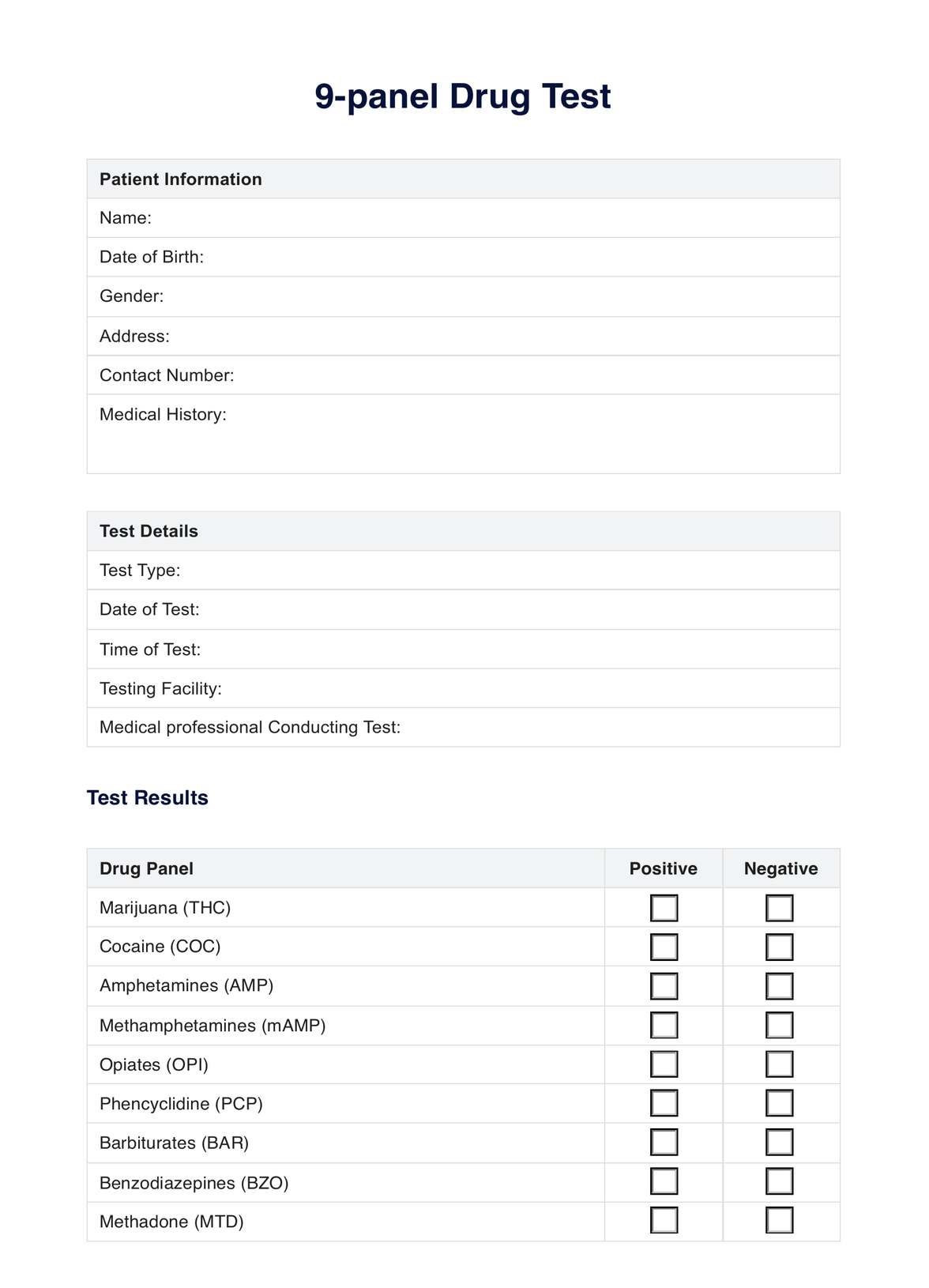A panel 9 drug test is a type of drug screening that examines a urine sample for the presence of nine different substances of abuse, including marijuana, cocaine, amphetamines, opiates, benzodiazepines, methadone, barbiturates, phencyclidine (PCP), and alcohol.

9-Panel Drug Test
Discover the comprehensive 9-panel drug test that screens 9 substances, including marijuana & cocaine. Learn more!
Use Template
9-Panel Drug Test Template
Commonly asked questions
The panel of a drug test refers to the number of different substances being screened for in a single panel urine drug test. For example, a 9-panel urine drug test screens for nine substances, while a 5-panel drug test screens for five substances.
Typically, around 30-60 milliliters (1-2 ounces) of urine is needed for a 9-panel drug test. This amount is sufficient for laboratory analysis and ensures accurate results.
EHR and practice management software
Get started for free
*No credit card required
Free
$0/usd
Unlimited clients
Telehealth
1GB of storage
Client portal text
Automated billing and online payments











